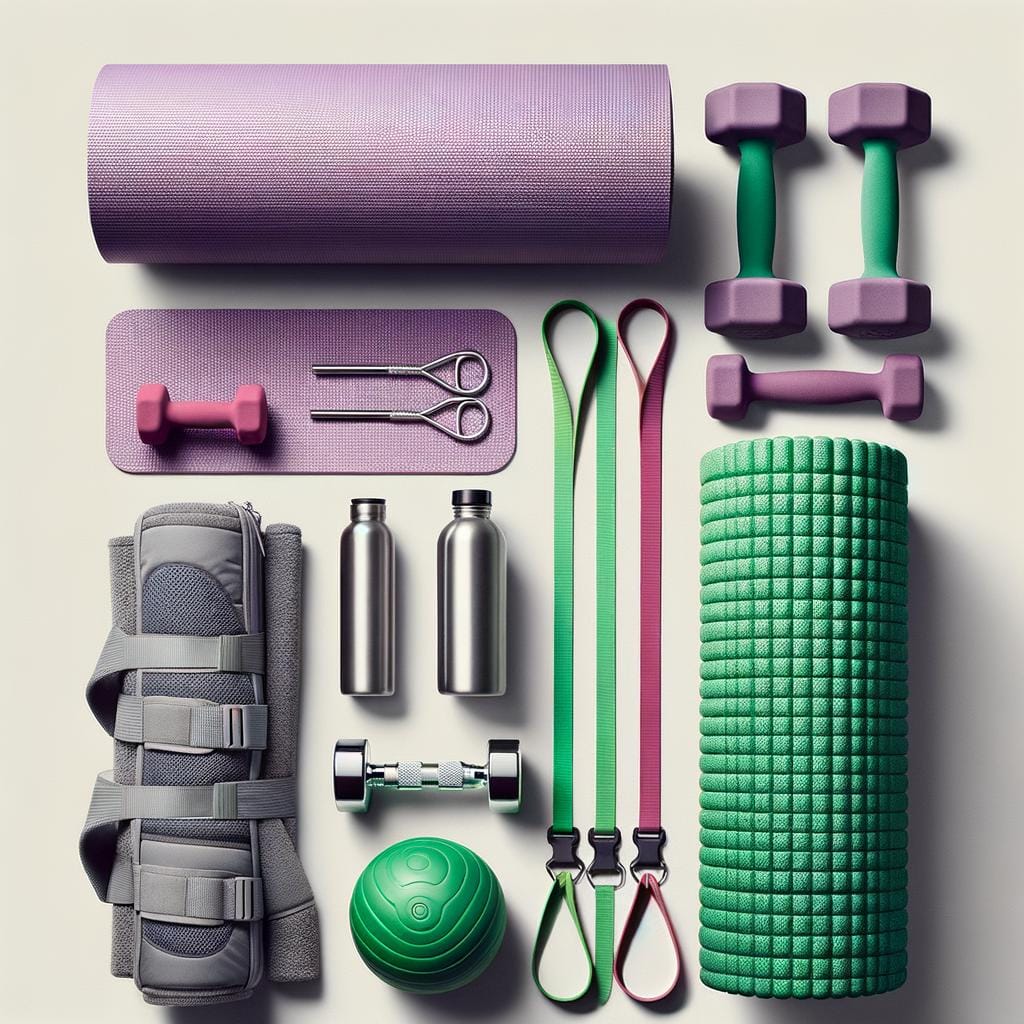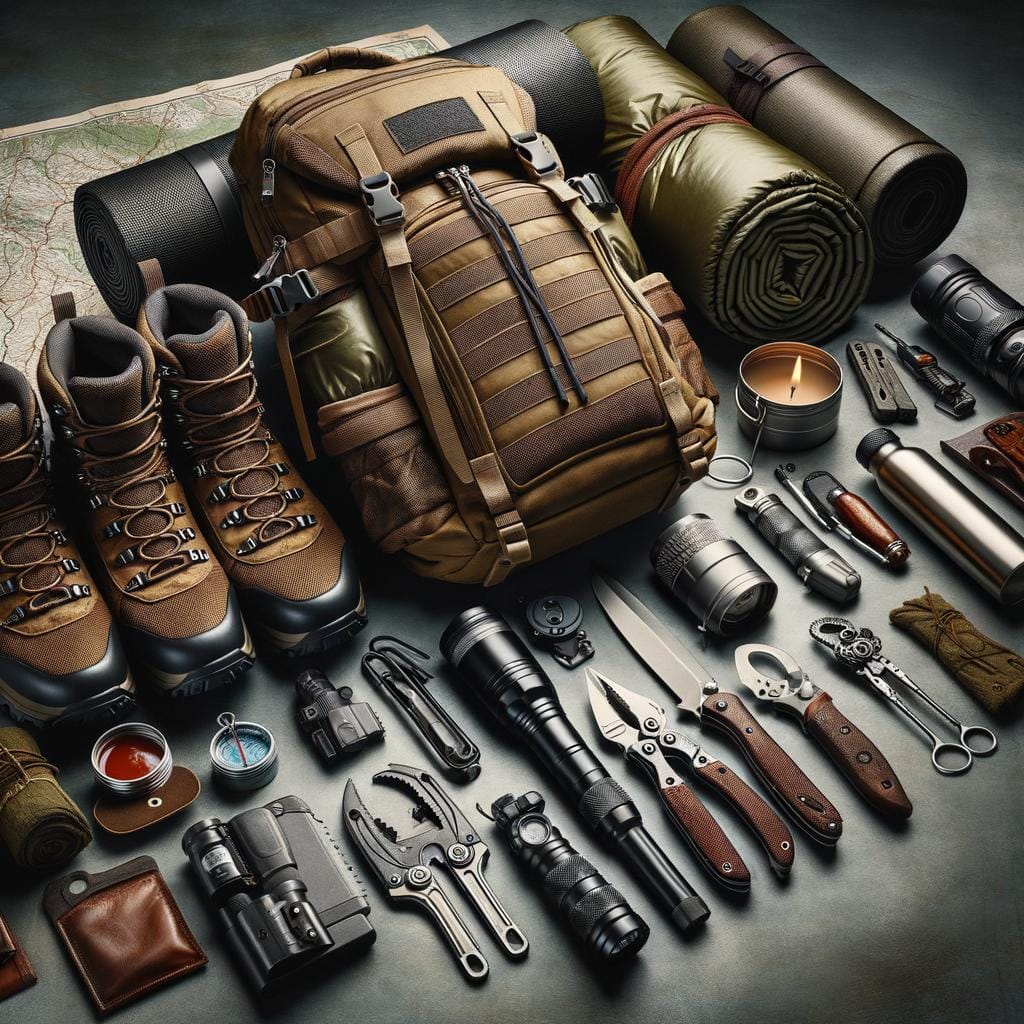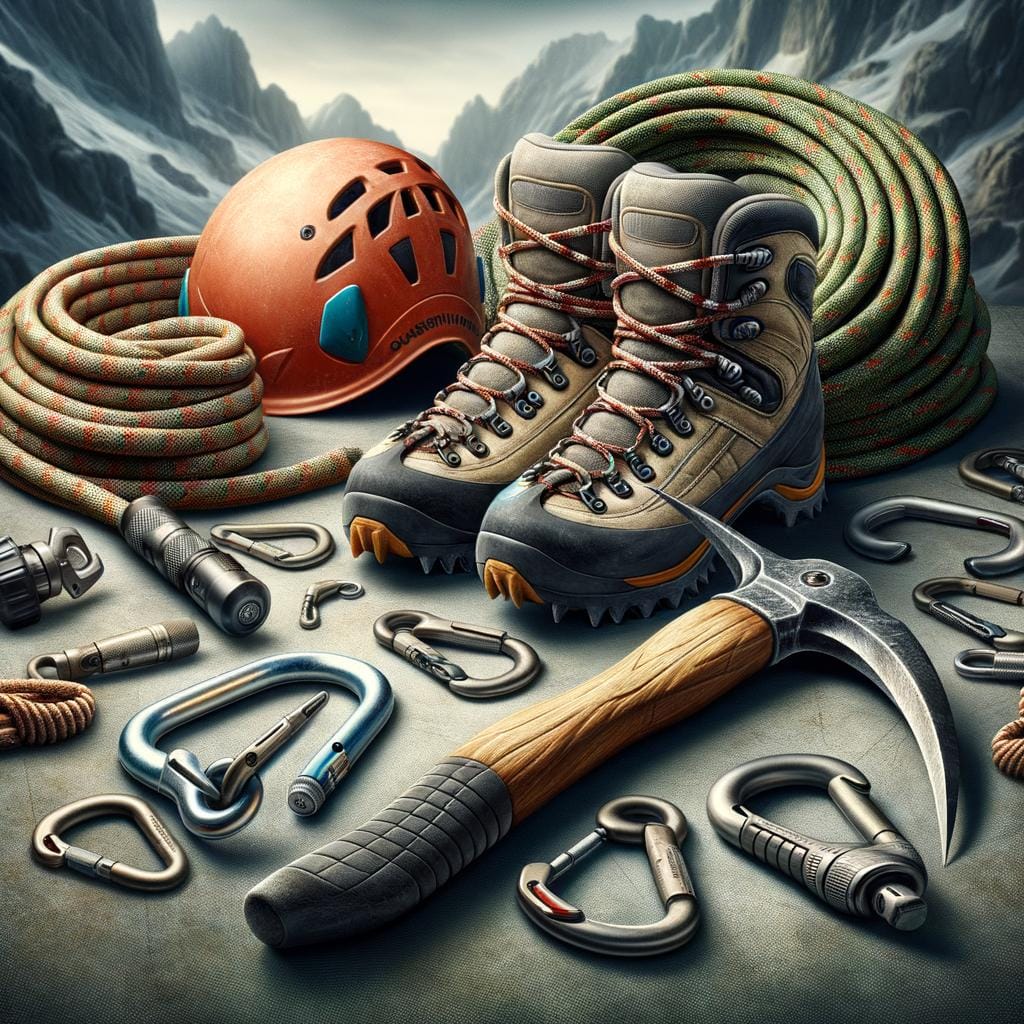In today’s world, where environmental conservation and sustainability are at the forefront of discussions, the importance of adopting low-impact gear cannot be overstated. Low-impact gear refers to products and equipment that have been designed with a minimal environmental footprint in mind, from production to usage to disposal. This type of gear is gaining popularity among individuals looking to reduce their ecological impact while still enjoying the benefits of quality gear.
Whether it’s outdoor equipment, clothing, or everyday accessories, low-impact gear offers a wide range of benefits for both individuals and the environment. By choosing low-impact gear, consumers can significantly decrease their carbon footprint and contribute to a more sustainable future. These products are not only eco-friendly but also durable and high-quality, ensuring that they provide long-lasting performance while minimizing environmental harm.
The shift towards low-impact gear is part of a larger movement towards responsible consumerism and environmental consciousness. It reflects a growing awareness of the need to make mindful choices in our purchases in order to protect our planet for future generations.
In the following sections, we will delve into what exactly constitutes low-impact gear, the various types available in the market, as well as the numerous benefits it brings – illustrating how incorporating these products into our daily lives can make a significant difference in creating a healthier environment for all.
What Is Low-Impact Gear
Low-impact gear refers to products that are designed and manufactured with the goal of minimizing their environmental impact during production, use, and disposal. This type of gear is made using sustainable materials, energy-efficient processes, and often incorporates recycled or upcycled components.
What sets low-impact gear apart from traditional gear is its focus on reducing carbon emissions, waste generation, and overall ecological footprint. By choosing low-impact gear, individuals can make a conscious effort to contribute positively to the environment while enjoying high-quality products.
One of the key characteristics of low-impact gear is its durability and longevity. Many low-impact gear items are built to last, reducing the need for frequent replacements and ultimately decreasing the amount of waste sent to landfills.
Additionally, low-impact gear often features versatile designs that can serve multiple purposes or adapt to changing needs, further extending their lifespan. This commitment to longevity not only benefits the environment by reducing resource consumption but also offers consumers a cost-effective solution in the long run.
Another distinguishing feature of low-impact gear is its eco-friendly production process. Manufacturers of low-impact gear prioritize sustainable practices such as using renewable energy sources, minimizing water usage, and ensuring fair labor conditions.
Furthermore, some brands go beyond just creating environmentally friendly products by actively engaging in conservation efforts or supporting environmental causes through donations or partnerships. Choosing low-impact gear allows consumers to align their values with their purchasing decisions and support companies that prioritize sustainability at every step of the production chain.
| Characteristics | Benefits |
|---|---|
| Durability and Longevity | Reduces waste generation and offers a cost-effective solution |
| Eco-friendly Production Process | Prioritizes sustainability practices and supports environmental causes |
Types of Low-Impact Gear
When it comes to low-impact gear, there is a wide range of options available in the market that cater to various needs and preferences. From sustainable clothing and accessories to eco-friendly outdoor equipment, individuals have plenty of choices when it comes to reducing their environmental footprint. These products are designed with the intention of minimizing harm to the environment throughout their lifecycle, from production to disposal.
Low-Impact Clothing
One popular category of low-impact gear is sustainable clothing made from organic, recycled, or upcycled materials. Brands like Patagonia, prAna, and EILEEN FISHER are known for their commitment to using eco-friendly fabrics and ethical manufacturing practices. Whether it’s a pair of jeans made from recycled plastic bottles or a cozy sweater crafted from organic cotton, consumers can find stylish and environmentally conscious clothing options for every occasion.
Eco-Friendly Outdoor Gear
For outdoor enthusiasts looking to minimize their impact on nature, there are a variety of low-impact gear options available. From solar-powered camping gadgets to biodegradable hiking boots, these products are designed with sustainability in mind. Companies like BioLite and REI offer a range of innovative outdoor equipment that allows adventurers to enjoy nature responsibly without compromising on performance.
Sustainable Accessories
In addition to clothing and outdoor gear, there is also a growing market for eco-friendly accessories that complement a low-impact lifestyle. Items like reusable water bottles, bamboo sunglasses, and cork wallets are just a few examples of sustainable accessories that consumers can incorporate into their daily routines. Not only are these products better for the environment than their traditional counterparts, but they also serve as stylish reminders of the importance of choosing low-impact gear.
Benefits of Using Low-Impact Gear
Low-impact gear offers a multitude of benefits for both individuals and the environment, making it a compelling choice in today’s world. By opting for low-impact gear, individuals can significantly reduce their carbon footprint and contribute to sustainable living practices.
This type of gear is designed to have minimal negative impacts on the environment throughout its entire lifecycle, from production to disposal. Additionally, using low-impact gear can also lead to personal health benefits, as it often contains safer materials that are free from harmful chemicals commonly found in traditional gear.
Environmental Benefits
One of the key advantages of using low-impact gear is its positive impact on the environment. Traditional gear often involves the use of materials and manufacturing processes that generate significant amounts of greenhouse gas emissions and contribute to pollution.
In contrast, low-impact gear is typically made from eco-friendly materials such as organic cotton, recycled fabrics, or sustainable alternatives like bamboo or hemp. By choosing low-impact gear over conventional options, individuals can help reduce their ecological footprint and support efforts to preserve natural resources.
Ethical Considerations
Another important advantage of incorporating low-impact gear into daily life is the ethical considerations associated with its production. Many low-impact gear manufacturers prioritize fair labor practices and transparent supply chains, ensuring that workers are treated ethically and paid fairly for their work.
This commitment to social responsibility not only benefits workers but also aligns with values of ethical consumerism and conscious capitalism. By supporting brands that prioritize ethical production practices, individuals can make a positive impact on communities around the world while enjoying high-quality products.
How to Choose the Right Low-Impact Gear
Low-impact gear offers a sustainable and eco-friendly approach to various activities, be it outdoor adventures or everyday routines. Choosing the right low-impact gear is essential not only for reducing your carbon footprint but also for enjoying quality products that align with your values. When looking for low-impact gear, consider the materials used in its production, the durability of the product, and its overall environmental impact.
One key aspect to look for when choosing low-impact gear is the use of recycled or upcycled materials. Many companies now source their materials from post-consumer waste or unused fabric scraps to create new products.
These materials not only reduce the demand for virgin resources but also help divert waste from landfills. Additionally, opt for gear made from renewable resources such as bamboo, hemp, or organic cotton as these materials have a lower environmental impact compared to conventional ones.
Durability is another essential factor to consider when selecting low-impact gear. Investing in high-quality items that are built to last can significantly reduce the need for frequent replacements, thereby decreasing overall consumption and waste generation. Look for gear that comes with warranties or repair options to ensure longevity and maximal use. By choosing durable low-impact gear, you can save money in the long run while minimizing your environmental footprint.
Moreover, when choosing low-impact gear, pay attention to certifications and labels that indicate sustainable practices. Look for products certified by organizations like Fair Trade Certified or Bluesign that promote ethical manufacturing processes and environmentally friendly standards.
These certifications provide assurance that the gear you are purchasing meets certain criteria for sustainability and social responsibility. By making informed choices based on these factors, you can select the best low-impact gear that suits your needs while contributing positively to a more sustainable future.
| Key Factors | Considerations |
|---|---|
| Materials | Recycled or renewable sources |
| Durability | Longevity and repair options |
| Certifications | Fair Trade Certified or Bluesign |
Case Studies
When it comes to incorporating low-impact gear into everyday life, there are numerous inspiring examples of individuals and companies leading the way towards sustainability. From eco-conscious outdoor enthusiasts to innovative businesses committed to reducing their environmental footprint, the use of low-impact gear is becoming more prevalent across various industries. Let’s take a closer look at some real-life case studies that demonstrate the positive impact of embracing low-impact gear.
Examples of Successful Implementation
- Outdoor Apparel Brand: Patagonia
- Eco-Friendly Footwear Company: Allbirds
- Sustainable Travel Agency: Responsible Travel
Impact on the Environment
These companies have made significant strides in reducing their carbon footprint and promoting sustainable practices throughout their supply chain. By utilizing low-impact gear in their products and operations, they have not only minimized waste but also paved the way for a more environmentally conscious approach to doing business.
Inspiring Change
Through their commitment to using low-impact gear, these individuals and companies are setting an example for others to follow. By showcasing the benefits of such practices, they are inspiring a shift towards more sustainable lifestyles and consumption habits. Their success stories serve as a reminder that small steps towards using low-impact gear can lead to significant positive changes for both individuals and the planet.
Maintenance and Care Tips
Low-impact gear, while designed to lessen its environmental impact, still requires proper care and maintenance to ensure its longevity and effectiveness. By taking the necessary steps to care for your low-impact gear, you can maximize its lifespan and continue to benefit from its eco-friendly properties.
Here are some essential maintenance and care tips to consider when handling your low-impact gear:
- Follow manufacturer guidelines: Always refer to the manufacturer’s instructions for cleaning and maintaining your low-impact gear. Different materials may require specific care techniques.
- Regular cleaning: Just like traditional gear, low-impact gear needs to be cleaned regularly to remove dirt, sweat, and other build-up. Use mild detergents or specialized cleaners recommended for eco-friendly materials.
- Proper storage: Store your low-impact gear in a cool, dry place away from direct sunlight. Hanging or folding items neatly can help prevent wrinkling or stretching of fabric.
By incorporating these simple yet crucial maintenance practices into your routine, you can prolong the lifespan of your low-impact gear and continue to enjoy its benefits while minimizing waste and environmental impact. Remember that investing in sustainable products also means taking responsibility for their care in order to make a lasting impact on both our planet and future generations.
Conclusion
In conclusion, the shift towards using low-impact gear is not merely a trend but a crucial step towards creating a more sustainable future. By opting for products that have minimal ecological footprint and reducing our impact on the environment, we are taking significant strides towards preserving our planet for future generations. The benefits of low-impact gear extend beyond personal satisfaction to tangible environmental impacts, making it a choice that holds tremendous value.
Choosing low-impact gear means making a conscious decision to contribute positively to the well-being of our planet. Whether it’s selecting biodegradable materials, supporting companies with sustainable practices, or investing in products designed for durability and longevity, every small choice adds up to create a significant difference.
With an increasing array of options available in the market, individuals now have the opportunity to align their lifestyle choices with their values and make a meaningful impact through their everyday decisions.
As we navigate the complexities of modern living, incorporating low-impact gear into our daily routines can serve as a powerful tool for advocating sustainability and responsible consumerism. By prioritizing quality over quantity and being mindful of the environmental consequences of our purchases, we not only reduce waste but also pave the way for a more eco-conscious society.
The transition to low-impact gear is not just about changing what we buy; it’s about embracing a mindset that values resourcefulness, conservation, and respect for nature’s delicate balance. Let us all commit to making sustainable choices today for a better tomorrow.
Frequently Asked Questions
Is Low Impact Good for You?
Low impact exercise can be beneficial for individuals with joint issues, beginners, or those looking for a gentler workout option. It helps in improving cardiovascular health, endurance, and overall fitness without causing excessive stress on the body.
What Does Low Impact Clothing Mean?
Low impact clothing refers to apparel made from sustainable materials and processes that have minimal negative effects on the environment. This includes using eco-friendly fabrics like organic cotton, bamboo, or recycled polyester, as well as utilizing responsible manufacturing practices.
Is Low Impact or High Impact Better?
The choice between low impact and high impact workouts depends on individual goals and physical condition. Low impact exercises are ideal for those recovering from injuries or looking for a gentler form of movement.
High impact workouts, on the other hand, can offer greater intensity and calorie burn but may pose risks of injury for some individuals. Ultimately, the best option is one that aligns with personal fitness goals and abilities.

An avid outdoor enthusiast, writer, and environmental advocate who has spent over two decades exploring the world’s most breathtaking landscapes. With a background in environmental science and a passion for adventure, Frances combines her love for nature with her talent for storytelling to inspire others to embark on their own outdoor journeys.





